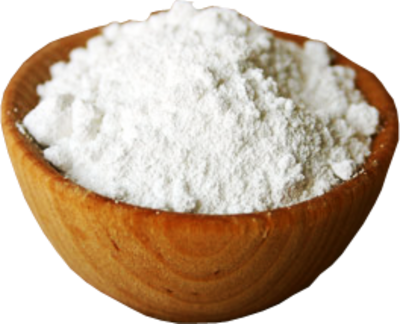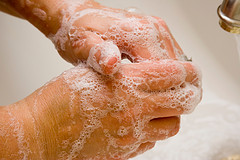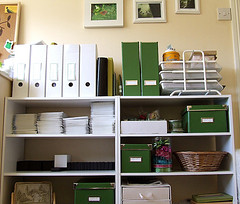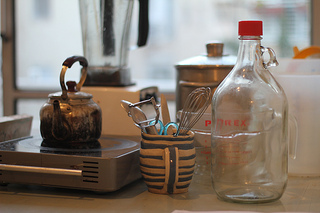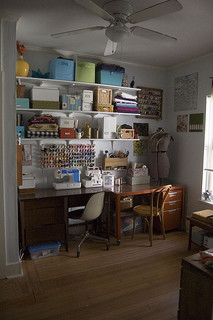When cleaning our homes, we often focus on the obvious areas—floors, countertops, and bathrooms. But what about the hidden spots that quietly collect dust, grime, and bacteria? Neglecting these areas can lead to poor indoor air quality, lingering odors, and even pest problems. Today, we’ll walk through the often-overlooked places in your home and how to clean them effectively with natural methods.
1. Baseboards and Trim
Why It Matters: Dust, pet hair, and dirt settle on baseboards and trim, creating buildup that can trigger allergies and make your home look dull.
How to Clean:
- Dust first using a microfiber cloth or a vacuum with a brush attachment.
- Mix warm water with a few drops of castile soap in a bucket.
- Use a damp microfiber cloth to wipe down the baseboards.
- For tough grime, apply a baking soda paste (baking soda + water), scrub gently, and wipe clean.
- Finish with a dry cloth to prevent moisture buildup.
📌 Quick Tip: Running a dryer sheet along baseboards afterward helps repel dust!
2. Light Switches and Door Handles
Why It Matters: These high-touch areas can harbor bacteria and germs, especially during cold and flu season.
How to Clean:
- Spray a vinegar and water solution (equal parts) onto a microfiber cloth and wipe down each switch and handle.
- For extra disinfecting power, add a few drops of tea tree or lavender essential oil.
- Avoid spraying liquid directly on switches to prevent electrical issues.
📌 Quick Tip: Set a reminder to clean these weekly since they’re used daily!
3. Vents and Air Returns
Why It Matters: Dust and allergens accumulate in vents, affecting air quality and forcing your HVAC system to work harder.
How to Clean:
- Remove vent covers and wash them in warm, soapy water.
- Use a vacuum with a brush attachment to clean inside the vent.
- Wipe the covers dry before reattaching.
📌 Quick Tip: Replace air filters every 1-3 months to keep dust from circulating.
4. Behind and Under Furniture
Why It Matters: Hidden crumbs, dust, and pet dander under sofas and beds can attract pests and impact air quality.
How to Clean:
- Move furniture if possible, or use a vacuum with an extendable hose to reach underneath.
- For hardwood floors, wipe under furniture with a damp microfiber mop.
- For upholstery, sprinkle baking soda, let sit for 15 minutes, then vacuum to remove trapped dust and odors.
📌 Quick Tip: Placing felt pads under furniture makes it easier to slide for cleaning!
5. Refrigerator Coils and Handles
Why It Matters: Dirty coils reduce efficiency and increase energy use, while sticky handles collect bacteria.
How to Clean:
- Unplug the fridge before cleaning coils.
- Use a vacuum with a brush attachment to remove dust from coils (usually located behind or underneath).
- Wipe refrigerator handles with a vinegar and water solution.
- For stubborn grime, use a baking soda paste and scrub gently with a cloth.
📌 Quick Tip: Cleaning the coils twice a year can improve your fridge’s efficiency and lifespan!
6. Under and Behind Kitchen Appliances
Why It Matters: Spilled food and crumbs attract pests and bacteria.
How to Clean:
- Pull out small appliances (microwave, toaster, coffee maker) and wipe under them.
- For larger appliances, use a long duster or vacuum hose to clean behind.
- Wipe down surfaces with a castile soap and water mixture.
📌 Quick Tip: If you can’t move a heavy appliance, use a yardstick wrapped in a microfiber cloth to reach underneath!
7. Inside Trash Cans and Recycling Bins
Why It Matters: Even with liners, residue and odors build up inside trash cans.
How to Clean:
- Take bins outside and rinse with a hose.
- Scrub with a baking soda and vinegar paste.
- Let dry completely before replacing the liner.
📌 Quick Tip: Sprinkle baking soda in the bottom of the can before adding a liner to absorb odors.
8. Ceiling Fans and Light Fixtures
Why It Matters: Dust accumulates on fan blades and fixtures, falling onto furniture and floors.
How to Clean:
- Use a pillowcase to dust fan blades—slide it over each blade, trapping the dust inside.
- For light fixtures, remove glass covers and wash them with warm, soapy water.
- Wipe bulbs with a dry microfiber cloth to remove dust.
📌 Quick Tip: Running your ceiling fan in reverse (clockwise) during winter helps circulate warm air!
9. Shower Curtain and Liner
Why It Matters: Mold and mildew love damp shower curtains.
How to Clean:
- Wash fabric curtains in the washing machine with a vinegar rinse cycle.
- For plastic liners, scrub with baking soda on a damp cloth or soak in a vinegar solution.
- Let the liner dry fully before rehanging.
📌 Quick Tip: Keeping the bathroom fan on after showers helps prevent mold growth!
10. Remote Controls, Keyboards, and Phones
Why It Matters: These high-touch items collect germs but are rarely cleaned.
How to Clean:
- Lightly dampen a microfiber cloth with a vinegar and water mix, then wipe the surface.
- Use a toothpick or cotton swab to remove grime from crevices.
- Let dry completely before use.
📌 Quick Tip: Make this part of your weekly routine to reduce germs!
Cleaning these forgotten spots doesn’t take much time but makes a huge difference in maintaining a fresh, healthy home. By adding these areas to your cleaning routine, you’ll improve indoor air quality, reduce allergens, and prevent grime buildup before it becomes a bigger problem. A little extra effort now means a cleaner, more comfortable home in the long run!
Would you add any other often-overlooked spots to the list? Let us know in the comments!

